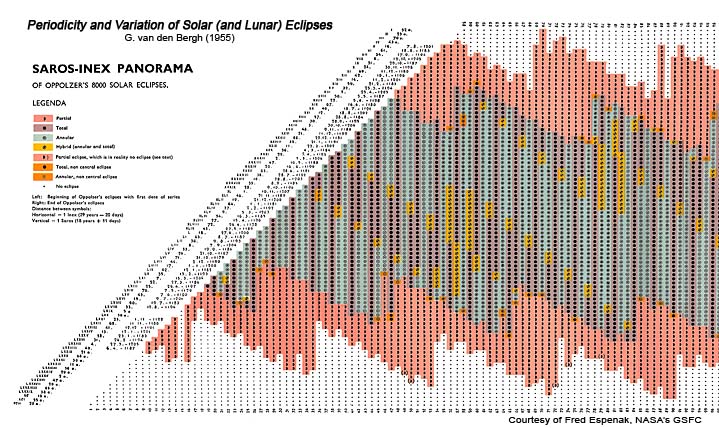So, some information provided by Tom in another thread really got me thinking last night. He said roughly that the sun projects itself onto the atmoplane a bit like a projector for the FE hypothesis. So what we see isn't in fact the actual sun. Thinking about this, it presents a few issues for how FE currently presents its idea. First off, it means FE has no actual idea on the size of the sun. If all we're seeing is a projection, we can't know the actual size of the sun based on that. The same obviously goes for the moon and other celestial bodies. Secondly, by extension we don't know the actual height of the sun or moon. We know this 'atmoplane' should be roughly 3000 miles up. But the height of the actual sun/moon? Completely unknown. So, we've now thrown two important factors out the window in regards to what? Eclipse prediction.
Since this would mean FE can't possibly create a model for the celestial objects to assist with predicting eclipses, they must rely completely upon their being reliable patterns in the Saros cycles. It's been Tom's claim for some time now that eclipse predictions are all based on patterns anyway. Lets try and put this to the test.
I decided to focus on Lunar Eclipses, since that would eliminate the need to explore at least one bit of data (namely *where* they occur would be a touch less impactful) too thoroughly. So, I pulled up the data for some lunar eclipses on NASA's website.
https://eclipse.gsfc.nasa.gov/LEdecade/LEdecade2001.html Plenty of easy links to other resources from there. As you can no doubt see though, there seems to be little help in looking at just a decade or two of eclipses. Clearly we need something else to look for patterns. Oh, Saros Cycles! Those things claimed to be how all predictions are made! Let's go take a look!
I started by grabbing the cycle that will have this years big upcoming eclipse in it, which happens to be
cycle 134. The easiest pattern to spot from just a single Saros Cycle is that they appear to follow a sort of 'curve' where they start with very minor penumbral eclipses, move up to total eclipses, then slide back down to penumbral eclipses. That's good! Clearly there IS a pattern going on here. Now, can we get more granular?
This is about where my solo attempts to glean info started running into problems. Perusing that single Saros Cycle there doesn't appear to be any pattern to things like duration or magnitude. Time to look further afield! Thankfully NASA has a handy bit of info at the top of each Saros Cycle page, so we can take a look at that to start, and move forward from there. I looked over that starting info on each of 10 consecutive Saros Cycles. I've got nothing. Granted, I'm not looking even at quite 10% of the total Saros Cycles we have identified, but I can't find any sort of pattern here with regards to: Total number of eclipses, number of total/partial/penumbral eclipses, ratio of total/partial/penumbral eclipses, duration of longest or shortest eclipse. Now I don't have the familiarity with a program that I could run to help me look for patterns, but by napkin math I'm not seeing any sort of pattern that could be used here to replicate the precision being offered by these predictions.
I know we're a bit away from the original question, but how does or would an FE predict anything but the periodicity of these eclipses? I'm not seeing any sort of pattern to their duration, or similar. Obviously we have the time between them, but I'm unable to locate any other pattern that could be used. Perhaps someone else might be able to?


